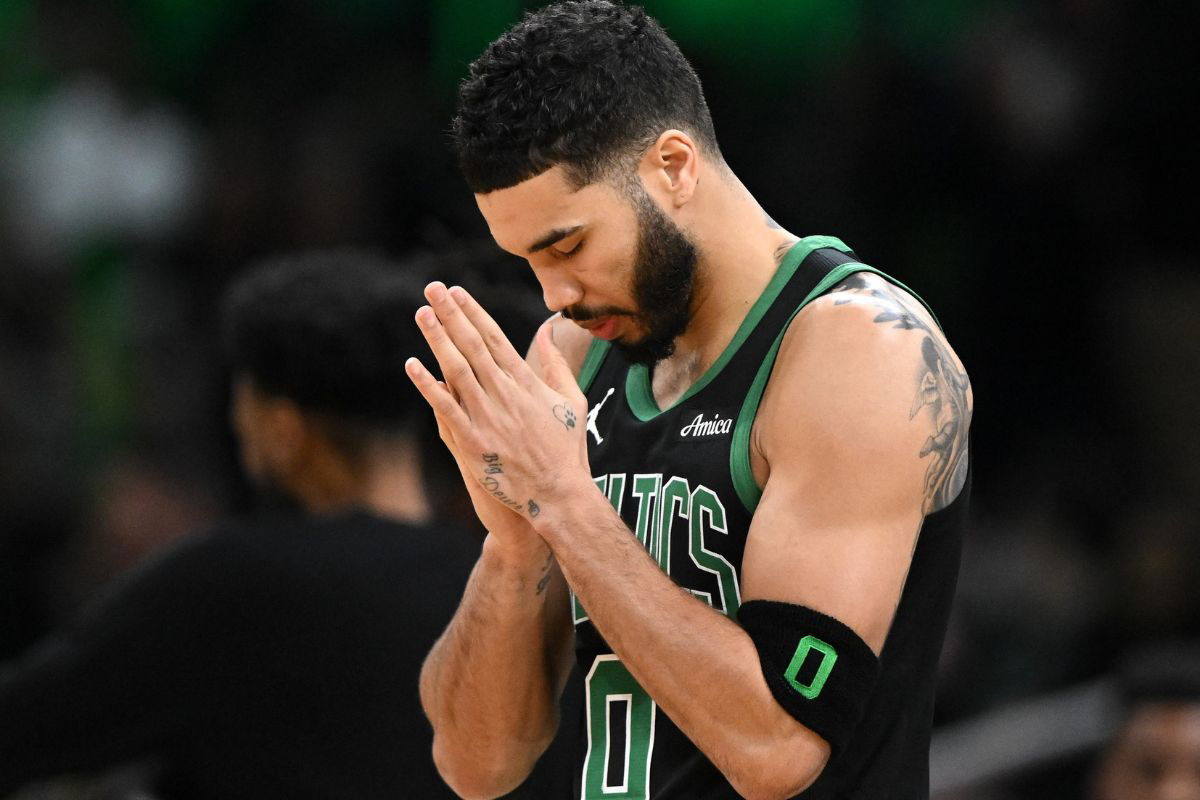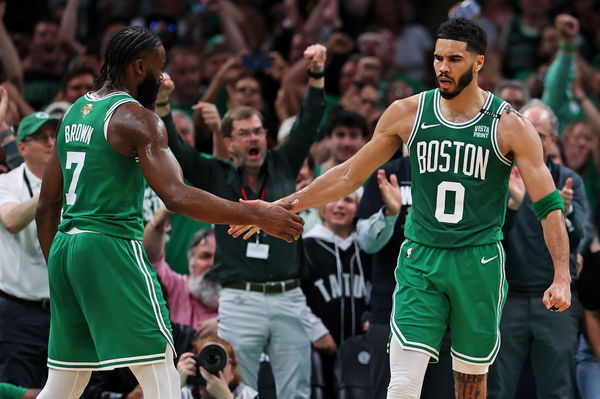
Imago
Jan 18, 2025; Boston, Massachusetts, USA; Boston Celtics forward Jayson Tatum (0) prayss before a game against the Atlanta Hawks at the TD Garden. Mandatory Credit: Brian Fluharty-Imagn Images

Imago
Jan 18, 2025; Boston, Massachusetts, USA; Boston Celtics forward Jayson Tatum (0) prayss before a game against the Atlanta Hawks at the TD Garden. Mandatory Credit: Brian Fluharty-Imagn Images
The Boston Celtics are entering a new era, and the changes are already making waves at TD Garden. Leading the charge is Bill Chisholm, whose $6.1 billion purchase of the team in May 2025 turned heads from Causeway Street to Wall Street. Since the purchase, the NBA scene has been whispering with speculation. Could the team really move from TD Garden, a building that has been the heartbeat of Boston basketball for over 2 decades?
Watch What’s Trending Now!
Could the Boston Celtics invest in a shiny new $2 billion arena in the Seaport district or somewhere else entirely? Chisholm’s initial comments carried a cautious optimism while answering, ‘Do you have a plan for the building’. “Short answer is no. We’re whatever weeks in now here literally. I think there’s some philosophies, philosophical pillars in terms of how I’m (we’re) thinking about it.” In other words, the door isn’t slammed shut, but the hint of change is visible.
“I mean, the first is, I love the Boston Garden. There have been banners raised there. That’s a great place for the fans. It’s a great place for the players. So that’s a really good place to start. Second thing I would say is that the Bruins and the Celtics belong together. So, no matter what happens, that’s a real priority for me. And then third, the most important thing is we’re going to create the best experience for fans that we can, and we’ll figure out what that is. But that’s kind of how I approach it. And we’ll go into with an open mind, but I think that’s the starting point, those three things.”
ADVERTISEMENT
Every decision now carries the dual weight of honoring the past while engineering a financially robust future. Financially, a new arena isn’t trivial. Comparisons to the Clippers’ $2 billion Intuit Dome show what’s possible: massive revenue from ticketing, concerts, and events, not to mention a modernized fan experience. But the costs are shocking, even for a billionaire-led ownership group.

Imago
Jan 10, 2025; Boston, Massachusetts, USA; Boston Celtics forward Jayson Tatum (0) and guard Jaylen Brown (7) warm up before the start of the game against the Sacramento Kings at TD Garden. Mandatory Credit: David Butler II-Imagn Images
Could the Boston Celtics turn ambition into reality without disrupting their current roster of stars, including Jayson Tatum and Jaylen Brown, whose contracts are pivotal to the team’s championship window? And then there’s the timing. TD Garden’s lease runs through 2036, giving the Celtics security but also limiting urgency.
ADVERTISEMENT
Yes, Chisholm’s remarks suggest patience, but also a strategic nudge that fans should watch closely, because the pieces are moving, even if slowly. Every report, every rumor about the Seaport district or elsewhere, feeds the narrative that a bold move could be imminent. Inside the Garden, though, the atmosphere is magnetic, to say the least.
ADVERTISEMENT
Celtics’ future between tradition and transformation
Nearly 3.5 million visitors pass through annually, 18 banners wave overhead, and memories of legends like Bill Russell, Larry Bird, and Paul Pierce saturate every corner. Yet for Chisholm, it’s clear that basketball passion alone isn’t the metric of success. Modern arenas offer luxury suites, enhanced tech, and multi-purpose revenue streams that TD Garden can’t fully accommodate without costly renovations. Still, the Boston Celtics’ current setup isn’t stagnant.
About 12 years ago, over $70 million went into renovations like upgraded concourses, concessions, and tech that keeps fans engaged. Club seats, Legends dining, and immersive visual displays keep TD Garden competitive with newer venues. “On behalf of the Jacobs family we are happy to announce that Phase I of the TD Garden renovation plan has been completed,” said Delaware North Companies and Boston Bruins Principal Charlie Jacobs in 2014.
Top Stories
“Shameful”: Steve Kerr Issues Strong Statement on Fatal Minneapolis Shooting

Stephen Curry Gives Brutal Assessment of Warriors-Kings Rivalry After Season-High Performance

Lakers Legend Calls Out Luka Doncic’s Concerning Habit After Bucks Loss

Steve Kerr Explains the Problem With Jonathan Kuminga After Tanking His Trade Value

Respect Pours in as LeBron James’ Ex-Teammate Gets Sober After Battling Homelessness

But ambition often overshadows history. Chisholm seems ready to consider a fresh footprint, potentially redefining where the Celtics call home. Players are watching, too. Tatum and Brown have grown accustomed to the Garden’s energy, and their contracts give them a say in the competitive window. Meanwhile, the NBA’s financial ecosystem itself is strengthening.
ADVERTISEMENT

USA Today via Reuters
Jun 17, 2024; Boston, Massachusetts, USA; Boston Celtics forward Jayson Tatum (0) celebrates with guard Jaylen Brown (7) after a play against the Dallas Mavericks in game five of the 2024 NBA Finals at TD Garden. Mandatory Credit: Peter Casey-USA TODAY Sports
Teams increasingly leverage arena ownership for diversified revenue, from concerts to premium experiences. For the Boston Celtics, a self-owned arena could unlock new possibilities, but it’s a high-stakes gamble, especially with existing player salaries, luxury tax concerns, and the weight of maintaining championship-caliber rosters. Chisholm’s philosophy indicates he values legacy but is unafraid to modernize. “We’ll figure out what that is,” he said, speaking of the fan experience.
It is an open-minded experimentation, an approach that respects the Garden’s history while leaving room for transformation. Every Celtics fan should brace for change, but also for opportunity. At its core, though, this isn’t just about a building. It’s about identity and a championship window that includes Jayson Tatum and Co. The Celtics are balancing reverence for the past with the lure of a financially strategic future.
ADVERTISEMENT
Chisholm may have set aside the initial $2 billion plan, but make no mistake, the strategy to redefine Boston basketball is well underway. Fans, analysts, and league executives alike will be watching, because the next chapter of the Boston Celtics’ history may not be written on Causeway Street at all.
ADVERTISEMENT
ADVERTISEMENT
ADVERTISEMENT

